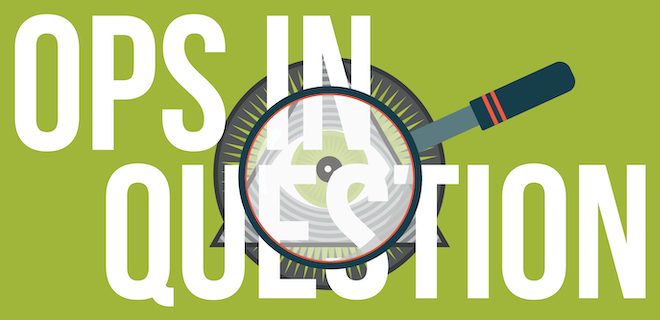
Google’s deprecation of Chrome’s third-party cookie is a complete overhaul of an industry standard. Yet, the Privacy Sandbox has the potential to help alleviate some of the uncertainty.
If the industry had a dollar for every time we’ve anticipated the impending doom of third-party cookies, we’d all be rich. At this point, fear-mongering is correct. Chrome is finally shutting down its third-party cookies in 2024.
In preparation for Chrome’s third-party cookie deprecation, they launched the Privacy Sandbox and Google Topics API to help publishers, advertisers, and everyone in between prepare for this drastic industry change. The Google Privacy Sandbox team partnered with brands across the advertising industry to help future-proof the product, including RTB House.
At the beginning of the year, RTB House launched AdIook, the first DSP incorporating Chrome Protected API. We spoke with Mateusz Jedrocha, VP, of Branding Solutions, Adlook, to understand how they developed this new world DSP, how integrating Google Topics API helps the ecosystem, and why publishers and advertisers should test the Privacy Sandbox.
Andrew Byrd: Adlook is a new cookieless DSP that launched earlier this year. What has the process been like creating a cookieless DSP, especially with the Chrome cookieless deprecation deadline so close? 
Mateusz Jedrocha: It’s been tremendously exciting. But it was easier for us than anyone else at this time because we are coming from RTB House group, a vocal and well-known contributor to the Privacy Sandbox.
In general, creating a future-proofed media-buying platform is challenging. We’ve invested in the Privacy Sandbox, evaluated the ecosystem changes, and actively participated as a group. It creates new opportunities for everyone in the ecosystem. It’s beenchallenging since the DSP space is quite crowded currently.
When building this, the challenging part was understanding how we could add value to the current market. The Privacy Sandbox and our approach to cookieless allow us to future-proof the tech. Future-proofing the platform has been one of the differentiation points for us versus some other DSPs on the market.
AB: How does integrating Google’s Topics API set Adlook apart from other DSPs?
MJ: Certainly, there are two critical ways in which Topics API sets us apart. First and foremost, our uniqueness stems from our extensive utilization of AI. Our success as a group has largely been driven by pioneering deep-learning algorithms, as we were the first DSP to employ such technology. This deep learning AI excels in deciphering complex user patterns and behaviors, precisely what personalized targeting requires.
We’ve harnessed these same deep-learning algorithms to optimize upper-funnel objectives. Topics API integrates seamlessly with our system, enhancing our understanding of users and the value of specific ad impressions. This is instrumental for many clients who rely on our guaranteed outcome feature, ensuring cost metrics like cost per completed view. Topics API fortifies our algorithms by providing an additional signal, compensating for inherent losses in the AI-assisted signal ecosystem.
The second significant application of Topics API lies in our clients’ targeting needs. Many of our success stories are in the CPG industry, where demographic targeting tends to be broad, but data quality is paramount. The Topics API enables them to connect with a vast user base, particularly within Chrome’s 60% plus market share. This API is a dependable source of deterministic signals, facilitating precision targeting based on users’ behavioral patterns.
AB: You have already leveraged partnerships with industry giants such as Kraft Heinz, IPG Mediabrands, Sanofi, SC Johnson, Mars, and PEPSICO. What has the testing process been like for AdLook while working with these brands?
MJ: Certainly, we are in a time when clients are eager to explore different cookieless advertising strategies. The challenge, until recently, was the limited ability to conduct meaningful tests on a real budget, real environment. Most testing involved control tests, merely attempting to mimic actual user behavior. With the general availability of more robust solutions, we’re now witnessing a significant increase in scale. This, in turn, enables advertisers to conduct more comprehensive tests and experiment within a more extensive ecosystem.
To address this challenge, we closely collaborate with our clients to establish various testing frameworks. While cookieless advertising is a key focus, we’re also working with advertisers, including some of the prominent brands you mentioned, to test the viability of sustainable media budgets that maintain performance levels. Additionally, advertisers of different sizes are exploring attention-based frameworks and evaluating how transacting on attention as a currency can work for them. This robust appetite for testing is evident, and advertisers rightly expect support in understanding data, comparing strategies, and building strategies that are as comparable as possible.
As we move forward, more clients will likely continue exploring this topic as the availability of cookieless strategies continues to increase. It’s also crucial to note that we designed our DSP to serve current and future needs. Some brands already use our platform to improve campaign efficiency or leverage AI to optimize KPIs. In essence, the trend is not just about what will be but also about how we can enhance advertising effectiveness today.
AB: In what ways does the Topics API integration provide a more cost-effective and user-centric approach for advertisers?
MJ: The Topics API is a standout feature within the Privacy Sandbox. Its primary purpose is to enable interest-based advertising without resorting to third-party cookies or site tracking, addressing the rising concern over user privacy. From a cost-effective perspective, advertisers benefit because the Topics API allows them to better target potential customers, while utilizing browser’s data with no additional fees. Instead of scattering ads broadly, they can focus on users’ specific interests, derived from the categories of sites they visit, increasing their working media and making every advertising dollar count.
AB: What challenges and opportunities does AdIook anticipate for advertising as other industry players start testing Google’s Privacy Sandbox?
MJ: The key challenges we face are related to adapting to changes in the ecosystem, especially regarding third-party cookies. With the coexistence of multiple currencies such as IDs, third-party cookies, and now, with the Privacy Sandbox in play, the challenge lies in determining the right timing and pace for the transition away from third-party cookies. We want to ensure enough time for testing while not prolonging the use of these cookies, knowing they will eventually become obsolete. We must learn how to properly manage the transition from traffic with faulty cookies to traffic without third-party cookies.
Another significant challenge we encounter is educating the market about the vast potential of the new framework. While it may initially appear as a passing trend, this transformation represents a remarkable opportunity for DSP and publishers.
For example, the recent emergence of our Prime Audience — the first ad network leveragings protected audience API and Privacy Sandbox tools to provide valuable data to advertisers and collaborate closely with publishers. Conveying this paradigm shift as an opportunity is paramount, as we envision the development of an entirely new ecosystem around the tools and APIs currently under discussion.
AB: There is a demographic in ad tech that still needs to start testing the Privacy Sandbox. What advice would you give them?
MJ: Initiate testing as soon as possible to grasp the dynamics and opportunities in the Privacy Sandbox. While the industry is slowly adopting testing due to limitations in scale and general availability, the tide is changing with more vendors and DSPs supporting these mechanisms.
Testing has become more accessible than ever before, and starting now is crucial. However, it’s important to remember that testing is not a one-time endeavor, as there is no single solution to replace third party cookies. Brands and agencies should adopt a continuous testing mindset, as new ways of dealing with data and measuring performance will continue to emerge.